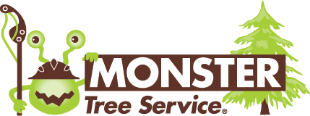Spongy Moth Infestation & Treatment
The Spongy Moth, previously known as the Gypsy Moth, originally began as an exotic pest native to Europe and Asia. It wasn't until 1869 that the European spongy moth made its entrance into the United States, starting in the Northeast and migrating into the Southeast and Midwest regions. The Asian spongy moth made its debut in the United States in 1991 and is most prevalent in the Northeast region.
The larvae begin to hatch in Spring, about the time Oak buds start to open. It's imperative that you catch and eliminate the pest before the caterpillar stage or as soon as this is also the feeding stage, which is when it poses the greatest threat to plant life. The young caterpillars initially prey on adolescent foliage and needles. As it grows, it will move on to more established foliage and needles, causing rapid defoliation of trees and shrubs.
Spongy moths have a cyclical pattern that varies over the years. Some years the populations may be low and unnoticeable, however in other years, populations can be substantial and devastating to our trees. In the years when the population is vast, the pest has the potential to defoliate trees and shrubs entirely.
While trees have a reputation for being a resilient species capable of withstanding seasons of heavy feeding, after consecutive years of this defoliation, trees will begin to decline severely or die as a result. Evergreen trees affected by spongy moths will lose their needles, and these needles will not re-establish. Therefore, the damage is far more noticeable on evergreens.
In the moth stage of life, the female European species does not fly, making for a slower spread. However, the Asian spongy moths are infamous for being active, long-distance fliers allowing them to spread to new unaffected areas rapidly, causing further damage to healthy plants. The moth stage is also when the pest begins to mate a lay its egg masses, containing an astounding average of 600-700 eggs.
